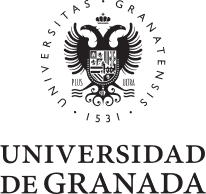Chemical Composition and Immuno-Modulatory Effects of Urtica dioica L. (Stinging Nettle) Extracts
Franciskovic, Marina; Gonzalez-Perez, Raquel; Orcic, Dejan; Sanchez de Medina, Fermin; Martinez-Augustin, Olga; Svircev, Emilija; Simin, Natasa; Mimica-Dukic, Neda
Publicación: PHYTOTHERAPY RESEARCH
2017
VL / 31 - BP / 1183 - EP / 1191
abstract
The purpose of this work was to determine the chemical profile of stinging nettle and to provide an insight into the mechanisms by which it ameliorates the immune response. Qualitative and quantitative liquid chromatography tandem mass spectrometry analyses indicated that phenolic acids (5-O-caffeoylquinic acid as dominant) and flavonol glycosides (rutin, isoquercitrin, and kaempferol 3-O-glucoside) are present in the aerial parts, while lignans (secoisolariciresinol, 9,9'-bisacetyl-neo-olivil and their glucosides) were detected in the root. Herb and root extracts expressed selective inhibition toward cyclooxygenase and lipoxygenase branches in human platelets: root extracts were better at inhibiting thromboxane production, while herb extracts were more specific toward inhibition of 12-lipoxygenase pathway. Stinging nettle extracts mildly increased monocyte chemoattractant protein-1 and growth-related oncogene release from nonstimulated intestinal epithelial cells, stimulating MyD88/NF-kappa B/p38 signaling, hence preserving the epithelial integrity and enhancing intestinal steady-state defense. Additionally, root extract reduced lipopolysaccharide-induced monocyte chemoattractant protein-1/growth-related oncogene secretion and cyclooxygenase-2 expression in intestinal epithelial cells, thus showing the potential protective effect against tissue damage caused by inflammation processes. These observations suggest that stinging nettle is an interesting candidate for the development of phytopharmaceuticals or dietary supplements for cotreatment of various inflammatory diseases, particularly inflammatory bowel diseases. Copyright (C) 2017 John Wiley & Sons, Ltd.
MENTIONS DATA
Pharmacology & Toxicology
-
3 Twitter
-
3 Wikipedia
-
0 News
-
0 Policy
Publicaciones similares en Pharmacology & Toxicology





